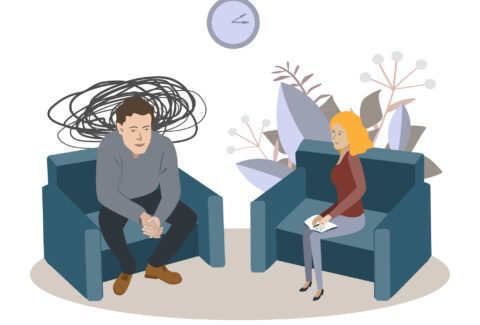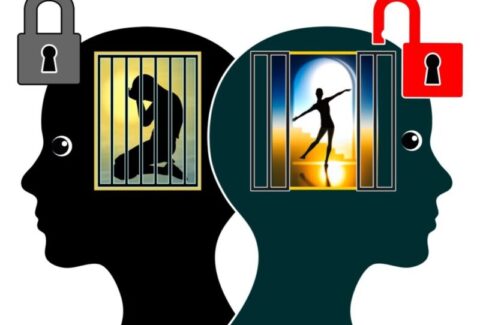The Gestalt Cycle of Experience: A Pathway to Awareness and Authentic Living

The Gestalt Cycle of Experience: A Pathway to Awareness and Authentic Living
Gestalt therapy[1] offers a unique and powerful approach to understanding human experience by emphasizing awareness, presence, and personal responsibility. At the core of this approach is the Gestalt Cycle of Experience—a model that describes how we move through various stages of awareness, sensation, and action to fulfill our needs and navigate our lives. Understanding this cycle can lead to deeper self-awareness, greater emotional clarity, and more authentic interactions with the world around us.
The Gestalt Cycle of Experience[2] reveals how we process and complete our experiences, both in everyday situations and in deeper, more profound personal growth. By identifying where we are in this cycle, we can become more attuned to our needs and more capable of taking purposeful, informed action to satisfy them.
The Cycle of Experience: An Overview
The Gestalt Cycle of Experience[3] outlines the process we go through from the moment we become aware of a need or desire to the point of fulfilling it. This cycle can be broken down into six key stages:
- Sensation
- Awareness
- Mobilization
- Action
- Contact
- Satisfaction/Withdrawal
Each stage plays a vital role in helping us navigate the complex interactions between our inner world and our external environment. Interruptions in this cycle, such as avoidance, overthinking, or emotional repression, can lead to unfinished business, emotional distress, or unmet needs. When we understand this process, we can become more mindful of where we get stuck and learn how to move through the cycle more effectively.
- Sensation: The Beginning of Awareness
The cycle begins with sensation—the body’s initial response to an internal or external stimulus. This is where we first notice a shift in our experience. Sensations may be physical (hunger, fatigue) or emotional (a sense of discomfort, joy). These sensations are the signals that tell us something requires our attention.In our fast-paced world, it is easy to overlook or suppress sensations, but in Gestalt therapy, sensation is the foundation of awareness.[4] By attuning ourselves to our bodily and emotional signals, we can begin to understand what we need and what changes are necessary to address those needs. - Awareness: Moving Into Consciousness
After sensation comes awareness.[5] In this stage, we bring the sensation into our conscious mind, identifying and labeling it. For example, we may notice a tension in our stomach and become aware that we are anxious, or we may recognize a feeling of tiredness and realize we need rest. Awareness is the key to understanding ourselves and our environment.Awareness also involves recognizing the context surrounding the sensation—whether it is related to a specific situation, relationship, or pattern of behavior. Through awareness, we begin to clarify what we are feeling and why, setting the stage for meaningful action. - Mobilization: Preparing for Action
Once we are aware of a need, the next stage is mobilization[6]—the process of preparing to take action to address that need. This is where we experience a surge of energy or motivation, whether it be mental, emotional, or physical. Mobilization often involves weighing options, considering possible outcomes, or planning how to move forward.In mobilization, we gather the inner and outer resources needed to meet the need. This could involve mental preparation, seeking support from others, or adjusting our mindset. Without proper mobilization, we may remain stuck in awareness without ever addressing the need or issue at hand. - Action: Stepping Into the World
Action is the stage in which we take concrete steps to fulfill the need that has been identified and mobilized. This could involve having a difficult conversation, making a decision, taking a break, or engaging in self-care. Action is where we make contact with the external world to bring about the desired change.Effective action in the Gestalt cycle is about intentionality[7]. It’s not just about doing something for the sake of doing it; rather, it’s about taking actions that are aligned with our awareness and true needs. Gestalt therapy emphasizes congruence between awareness and action, ensuring that our behavior genuinely reflects our inner experience. - Contact: Engaging Fully
Contact is the heart of the Gestalt cycle.[8] It refers to the moment when we are fully present and engaged with the situation or the other person involved. It is through contact that we experience the world in a deep and meaningful way. Whether it is an interaction with another person, a moment of self-reflection, or an immersion in an activity, contact represents genuine connection.Healthy contact involves a balance between engagement and boundaries. In Gestalt therapy, contact is about being fully available to the experience without losing oneself in it. It is through contact that we integrate our experiences, allowing for personal growth and transformation.
- Satisfaction/Withdrawal: Completing the Cycle
The final stage of the cycle is satisfaction[9], followed by withdrawal. Once the need has been met through action and contact, there is a natural sense of satisfaction or relief. This is the stage of completion, where the individual feels whole and at peace with the experience.After satisfaction, the cycle ends with withdrawal—a period of rest and reflection. In this stage, we disengage from the activity or interaction and allow ourselves time to process and integrate the experience. This withdrawal is essential for rejuvenation and prepares us to begin the cycle anew when the next need or sensation arises.
Interruptions in the Cycle
While the Gestalt Cycle of Experience offers a clear path to awareness and fulfillment, it is not uncommon for individuals to experience interruptions or blocks at various stages. These interruptions, often called unfinished business in Gestalt therapy, can lead to emotional distress or repeated patterns of unfulfilled needs. For example:
- At the sensation stage, individuals may ignore or numb their sensations, disconnecting from their bodily or emotional signals.
- At the awareness stage, they may avoid acknowledging their feelings or distract themselves from uncomfortable truths.
- At the mobilization stage, fear or indecision may prevent them from preparing for action.
- At the action stage, self-doubt, procrastination, or external obstacles can block them from taking necessary steps.
- At the contact stage, they may struggle with intimacy, trust, or vulnerability, making it difficult to engage fully.
- At the satisfaction stage, they may feel guilty or anxious about their needs being met, leading to an incomplete sense of closure.
Gestalt therapy helps individuals identify these interruptions and work through them, allowing the cycle to flow naturally and leading to more fulfilling experiences.
Living Authentically Through the Cycle
The Gestalt Cycle of Experience encourages us to live authentically[10], by becoming more aware of our needs and learning to meet them in a healthy and responsible way. It offers a framework for personal growth by highlighting the importance of self-awareness, intentional action, and meaningful connection. By embracing each stage of the cycle, we can move through life with greater clarity, purpose, and satisfaction.
Ultimately, the Gestalt Cycle of Experience teaches us that life is a continuous process of becoming aware, taking action, and finding fulfillment. It encourages us to be present in the moment, to trust our inner experience, and to engage fully with the world around us.
By following this cycle, we cultivate a deeper understanding of ourselves and create the conditions for more authentic, enriched, and conscious living.
[1] Wheeler, Gordon, and Lena Axelsson. Gestalt therapy. American Psychological Association, 2015.
[2] Russell, Gayle, Dip GT Grad, and G. T. Masters. “The Gestalt Cycle of Experience: A Creative Tool for Growth.” Gestalt Review 10.3 (2006): 260-270.
[3] Stevenson, Herb. “Gestalt Cycle of Experience.”
[4] Grossman, Susan. “Empirical evidence of the embodiment awareness changes in somatic focused gestalt psychotherapy.” The Art and Science of Embodied Research Design. Routledge, 2020. 75-86.
[5] Spoth, Juliann, et al. “Gestalt approach.” The Wiley-Blackwell handbook of the psychology of coaching and mentoring (2013): 385-406.
[6] Gross, Thomas F. Mobilizing Commitment. Xlibris Corporation, 2011
[7] Bloom, Dan. “Intentionality: The fabric of relationality.” The Humanistic Psychologist 48.4 (2020): 389.
[8] Bloom, Dan. “Commentary I: The Cycle of Experience Re-Cycled: Then, Now… Next? Let’s Go Round Again: Cycle of Experience or Sequence of Contact? Dan Bloom Has Another Go with Seán Gaffney.” Gestalt Review 13.1 (2009): 24-36.
[9] Carmer, James C., and David L. Rouzer. “Healthy functioning from the Gestalt perspective.” The Counseling Psychologist 4.4 (1974): 20-23.
[10] Zahm, Stephen G., and Eva K. Gold. “Gestalt therapy.” Encyclopedia






